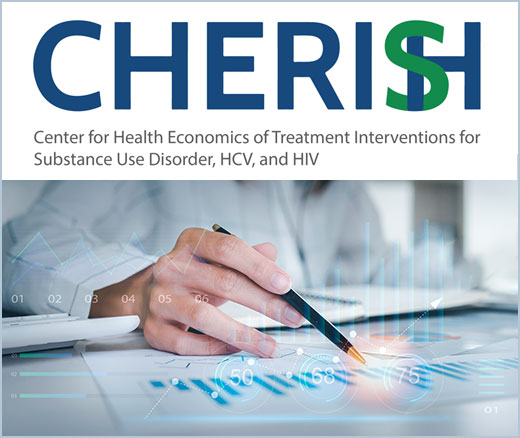
New Model Predicts Stimulant Overdose Risk Among Medicaid Patients
LDI Fellows Used Medicaid Data to Identify Individuals at Highest Risk for Cocaine- and Methamphetamine-Related Overdoses, Paving the Way for Targeted Prevention
Substance Use Disorder
Blog Post

Only one in 10 people with opioid addiction get medications for opioid use disorder. And of those that do, fewer than half continue taking them long-term, putting patients at higher risk for overdoses and death. To increase treatment, the Substance Abuse and Mental Health Services Administration (SAMHSA) has increased flexibility around dosing, allowing practitioners to provide take-home doses of methadone, the “most effective medication for addiction ever developed,” as LDI Associate Fellow Ashish Thakrar wrote in an opinion piece in the Los Angeles Times.
Methadone is part of a unique system of care in the U.S. Legally, doctors cannot prescribe it to be picked up at a pharmacy. Instead, methadone can be dispensed only from specially licensed “opioid treatment programs.” When patients first start treatment, they must come to these programs five to six days per week to get their daily dose. This system, developed in the 1970s, persists today in part because methadone is a stronger opioid than buprenorphine. Also, federal regulations have not adequately responded to the overdose crisis. To improve access to methadone, new strategies are emerging, such as “low-barrier treatment,” but much remains to be done to increase adherence. To raise retention rates, policymakers must understand the biggest challenges that patients face, but those have been unclear. To determine which factors play the largest role in a person’s decision to quit methadone treatment, Thakrar and his colleagues asked patients and staff about why those on methadone decided to stop. Both groups described internal and external challenges, including concerns about methadone’s side effects and difficulties in maintaining access to the medication. To learn more about the implications of his study, I spoke to Dr. Thakrar.
Methadone and buprenorphine are the two most effective treatments for opioid addiction. They both reduce mortality, overdoses, illicit opioid use, and the spread of infectious diseases like HIV. However, there are important differences between the two medications. Methadone is a stronger opioid medication, which means some patients who do not respond to buprenorphine might do better with methadone. Although each patient is unique, overall patients tend to stay in treatment longer on methadone than on buprenorphine.
Patients tend to stop treatment before it is safe to do so. We know that patients who stop these medications within the first one to two years of treatment have a higher risk of relapse and overdose. However, most patients stop treatment by about six months. We wanted to understand why retention at one year is so low.
Previous studies found that patients who were older, had stable housing, and were on appropriate doses of methadone were more likely to stay in treatment. However, few other studies have actually asked patients why they might be interested in stopping methadone treatment within the first year.
Patient advocates and experts have hypothesized that the burden of coming to opioid treatment programs in person is one reason for stopping methadone early. However, from my experience working in an opioid treatment program, I suspected that patients might have other reasons as well. We conducted this study to understand what those reasons might be.
SAMHSA provides education and guidance to patients and providers on using medications for opioid use disorder through their Treatment Improvement Protocol (TIP) 63, as well as through other resources. In TIP 63, SAMHSA outlines the risks of overdose and sedation from long-acting opioids like methadone, especially if patients use other sedating medications like benzodiazepines or alcohol while taking methadone. This document also instructs patients to be aware of other side effects such as constipation and sexual dysfunction.
In our study, we found that patients are actually much more concerned about two different possible side effects: damage to teeth and bones. These are not mentioned in SAMHSA education because they are not supported by existing evidence. Researchers do not think that methadone treatment for one to two years directly damages teeth or bones.
Thus, SAMHSA and clinicians should consider dispelling myths about these concerns while researchers conduct more rigorous studies.
Researchers such as Kyle Kampman, MD, here at Penn have worked hard to identify a medication that can consistently control cravings for cocaine. Medications like the anti-seizure drug topiramate and the stimulant modafinil have shown promise in early studies, but larger studies have not been conducted or shown efficacy. Currently, the best treatment to control cocaine craving is not a medication, but rather a behavioral treatment called contingency management. This treatment offers structured rewards and reinforcement to patients who consistently demonstrate abstinence or who meet other treatment goals. Opioid treatment programs that offer methadone treatment rarely offer contingency management, so this is one opportunity to respond to patient needs by offering more holistic care.
Early in treatment, patients do not get any “take-home” doses, and instead have to come to their programs almost every day of the week. These programs are generally only open during the mornings, for example, from 6 a.m. to noon. If patients miss a bus, face bad weather, or have a family emergency, they can easily miss the narrow window to get their daily dose of methadone. Without that, patients can develop painful opioid withdrawal symptoms that can trigger a return to illicit opioid use.
It was revealing that patients brought up these difficulties while clinicians did not. I think this shows the gap between what we see as clinicians and what patients actually experience under this system of care. Clinicians see patients suddenly drop out of treatment and don’t know why, whereas patients are nervous about missing a dose and are always aware that a missed dose could trigger a return to drug use or addiction.
SAMHSA has made a proposal to continue offering take-home dose flexibility. This is an excellent and long-needed update to the regulations that govern methadone treatment in opioid treatment programs. One concern I have is whether opioid treatment programs will actually implement these changes, as SAMHSA currently lacks the authority to mandate them to do so.
To ensure that patients actually benefit from this flexibility, two things will need to happen. First, accreditation agencies like the Commission on Accreditation of Rehabilitation Facilities (CARF) should mandate that opioid treatment programs implement these new provisions. Second, Medicare and state Medicaid agencies should make the implementation of these provisions a quality measure for reimbursement.
Unfortunately, SAMHSA can only do so much because they do not control reimbursements or federal law that bars methadone prescribing in primary care. Without additional changes, patients in rural areas or patients who lack transportation to opioid treatment programs will not be able to access methadone for opioid use disorder.
To increase access in these communities, we should pass the bipartisan Modernizing Opioid Treatment Access (MOTA) Act recently introduced in both the Senate and the House. This would allow addiction medicine specialists to prescribe methadone to pharmacies and would provide patients with a way to access methadone that is separate from opioid treatment programs.
Congress recently removed the requirement for a special waiver to prescribe buprenorphine; this was an important step in the right direction. It’s time to take a similar step with methadone by allowing board-certified addiction medicine specialists to safely and responsibly prescribe methadone from primary care settings.
The study, “Transitioning off Methadone: A Qualitative Study Exploring Why Patients Discontinue Methadone Treatment for Opioid Use Disorder,” was published on April 23, 2023 in the Journal of Substance Use and Addiction Treatment. Authors include Ashish Thakrar, Jarratt Pytell, Kenneth Stoller, Vickie Walters, Roger Weiss, and Geetanjali Chander.


LDI Fellows Used Medicaid Data to Identify Individuals at Highest Risk for Cocaine- and Methamphetamine-Related Overdoses, Paving the Way for Targeted Prevention

Penn and Four Other Partners Focus on the Health Economics of Substance Use Disorder

Penn Medicine’s New Summer Intern Program Immersed Teens in Street Outreach Techniques

LDI Experts Offer 10 Solutions to Get More Help to Seniors With Addiction

More Flexible Methadone Take-Home Policy Improved Patient Autonomy
Research Brief: LDI Fellow Recommends Ways to Increase Availability